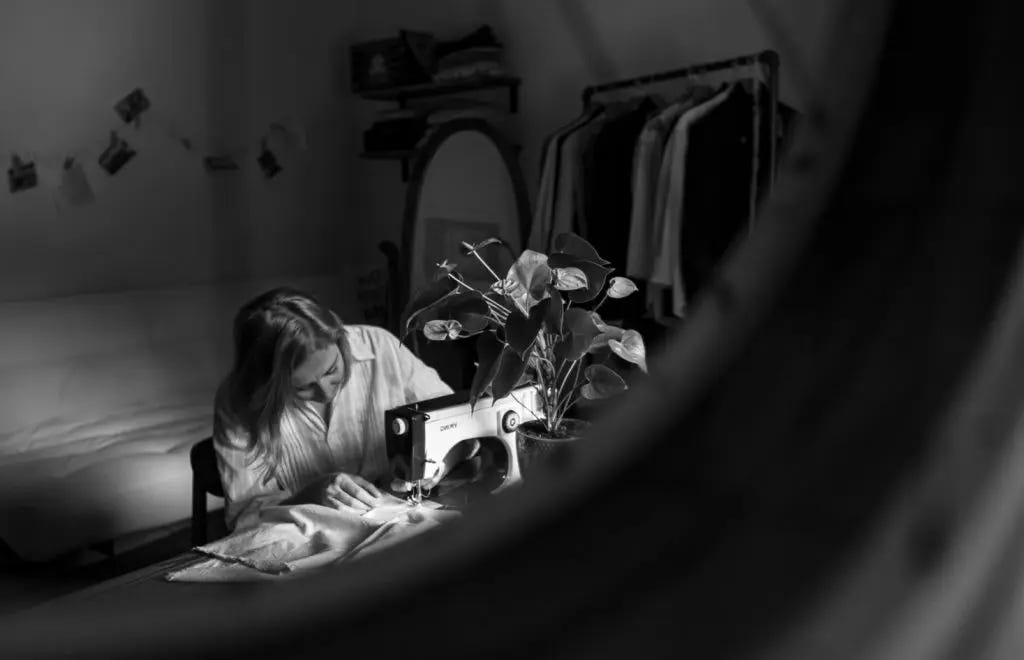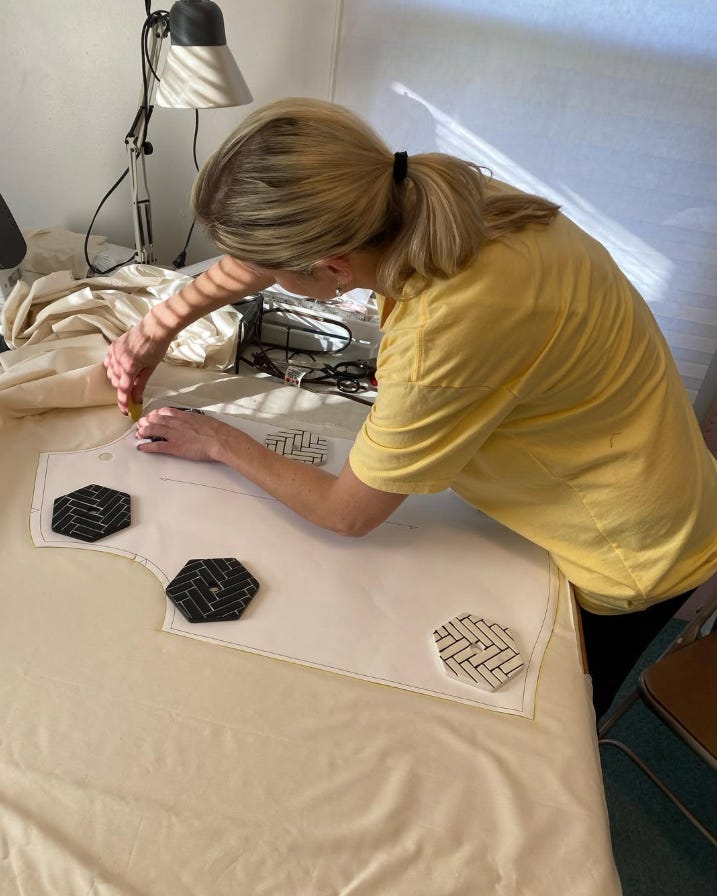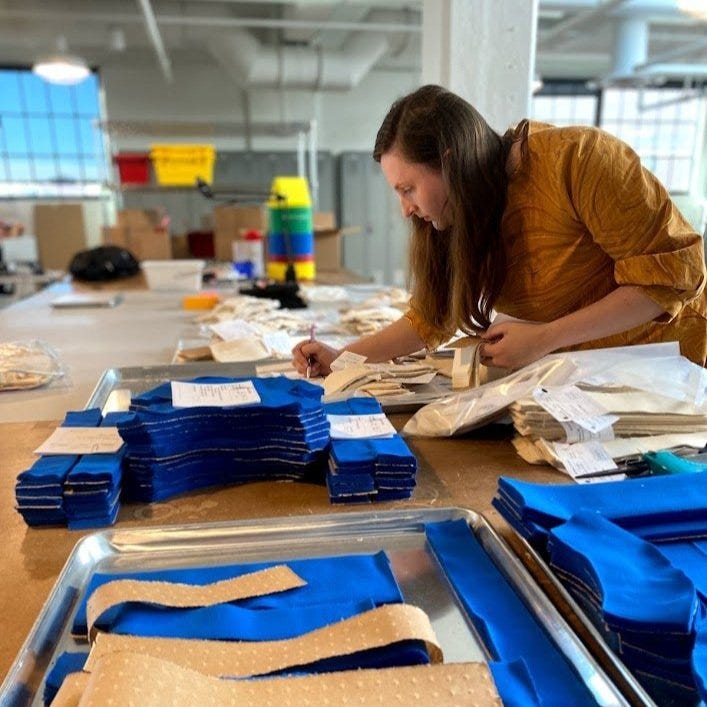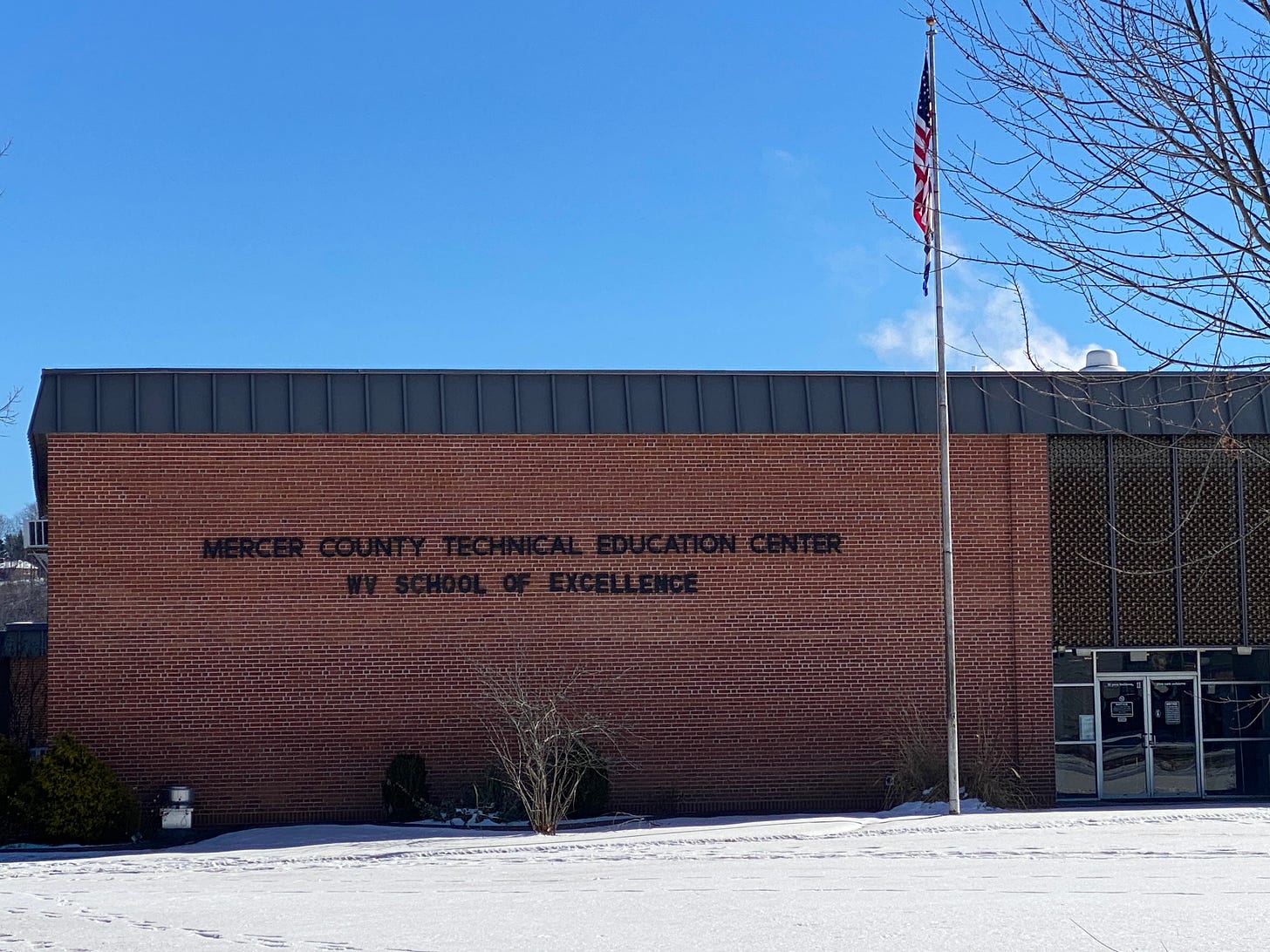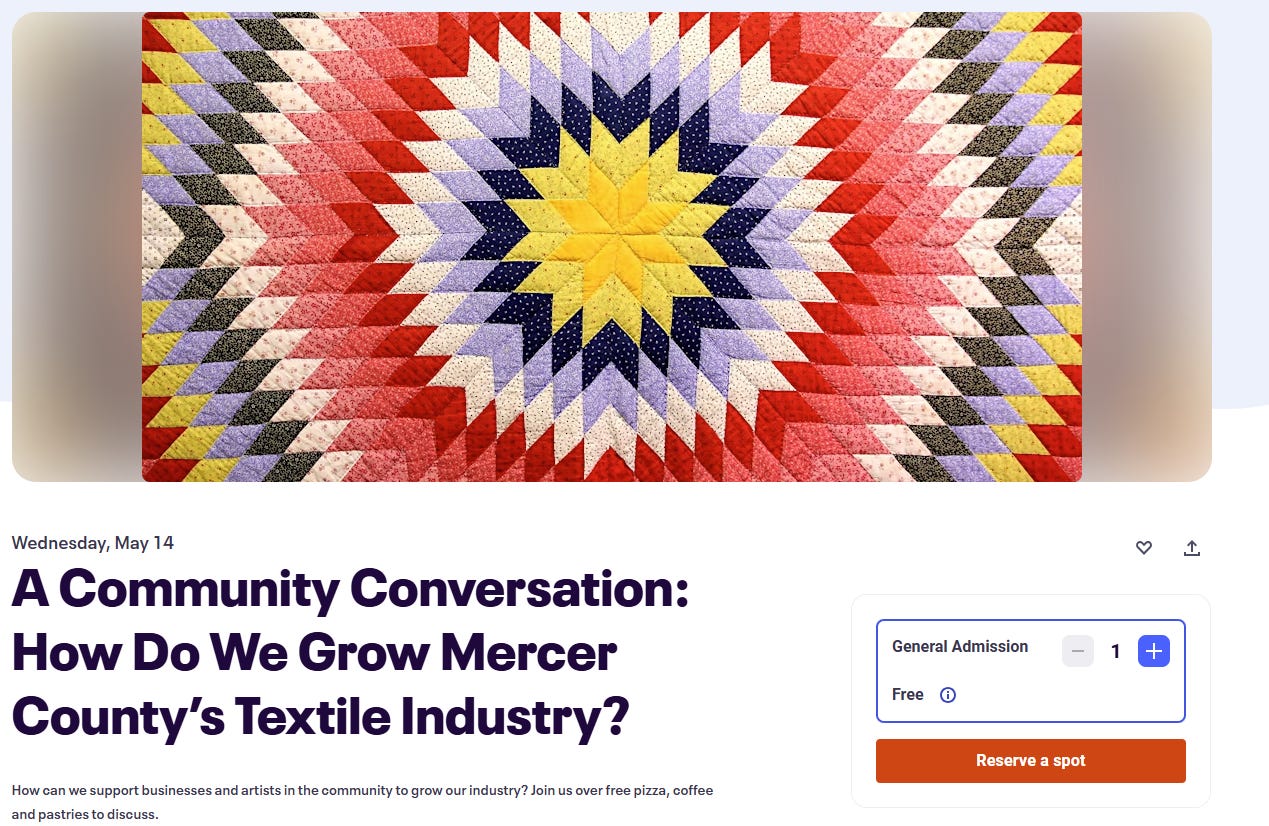Years in the making
Reshoring sewing jobs in West Virginia is a critical aspect of reviving the textile industry in the state. These days years of dogged work to revive this skill is our communities is paying off.
Paid Subscribers: Please be sure to listen to the audio recording of this post at the bottom. Thank you!
Last week we hit a major milestone in our work to help bring the textile industry back to our communities here in southern West Virginia. I met with the awesome Principal of our local vocational school, MCTEC (Mercer County Technical Education Center), Ms. Danielle Farmer to talk about our next steps to build a Fashion Technology and Industrial Sewing Course after learning that 29 high school students expressed interest in the program in their survey last month. Ms. Farmer shared with me that this was enough interest to proceed with approvals for building the program at our local vocational school. The proposed program will include a 240 hour industrial sewing curriculum as well as training in digital design software used in the industry.
Why is this so huge for our work here? I moved to Princeton, WV in 2020 - to a small community in the southern part of the state - most impacted by the loss of coal mining jobs - in part to help create sewing jobs in the community. Why did I want to create sewing jobs here? I saw a coming custom garment revolution from the innovation that is taking place in digital design and measurement software that could create more value for sewing skills. But there was just one problem - the folks that knew about sewing in our communities were retiring. The younger generation was not learning sewing and that was impacting the availability of sewing services like alterations - which rely on an increasingly scarce number of trained sewers.
And so in the winter of 2021 I launched a fundraiser to train local sewers how to make custom blouses - with 11 women generously supporting this effort alongside the support of a few local groups such as the Governer’s Guarantee Work Force Program, INNOVA, and CART Inc. In spite of our support, I learned the hard way that we had nowhere near what we needed to train sewers - as we struggled to work 3 hours once a week with a generous local tailor and sewing instructor, Lisa Lambert, who was squeezing us into an already very full schedule. The program fell short in all areas: funding, instructor and student time and equipment.
The work I took to help build the WV Textile Industry Strategy with Coalfield Development a few years later reinforced my belief that bringing sewing back to WV was a critical part of rebuilding our industry here. I learned about how many jobs sewing creates - somewhere around 40k in Los Angeles County alone. I learned that sewing is the linchpin in the textile industry. It is where the majority of the labor hours take place in an already super labor-intensive industry. Sewing is the hardest piece of the process to automate. The precious work of human hands that takes place here - will be protected from automation in the foreseeable future. And - as I learned from my interviews for the textile strategy - everything follows the needle - if you bring the sewing work to a region - other parts of the textile manufacturing process will follow, bringing more jobs (!).
It was also through this work that I learned what it would take to train sewers. Not a night or two a week for a few hours, not even 2 full time weeks. No - a serious curriculum for sewing manufacturing training I found - developed by Carhart in Detroit Michigan was a 240-hour curriculum that takes place - full time over 8 weeks and provides a broad enough curriculum for folks to learn the major sewing machine types used in industry (learn more on the ISAIC curriculum here).
Armed with this knowledge, I tried in vain multiple times to get groups to support the work. Making these arguments to everyone who would listen again and again to different funders. One-pagers on a proposed sewing training, presentations, meetings, repeat, repeat, repeat. All the while I listened to stories from designers and other makers who had no sewing help - who were doing all the steps alone - running the business, designing product, sourcing fabric and sewing everything up alone because they could not find sewing help. I visited an incredible designer in Thomas, WV who had hardly any of her products on her racks because she had sold out and couldn’t keep up with the sewing.
And then in January I met with Ms. Danielle Farmer, Principal of MCTEC. I fell for the brilliance of their vocational program - giving high school students half of every school day to get practical, hands-on career training. At MCTEC you have this incredible network of people who know how to make things out of wood, metal, how to wire things all under one roof. And a student, who is interested in textiles could get hours of sewing experience on industrial machines 5 days a week. I thought hard about what such a program would need to look like to best equip these students for the future of textiles and landed on a broad based sewing curriculum like the ISAIC program described above in combination with digital design skills - software like the Browzwear software I am learning, a competing software, Clo and the Adobe Design Suite so that students have both the tech and hand skills to help business build for the future (or to start their own businesses!).
Through the Mercer County Textile Survey we completed last week, supported by the Princeton Accelerate team and the WV Community Development HUB - we have the documented number of businesses to create such a program. In April we got the number of students required to build it, saying they would sign up for such a program. Next up - approval from the WV Department of Education and onto the Mercer County School Board. Principal Farmer says she loves building new programs - that she loves being the first to create a program (to date we know of no other vocational program like this). Ms. Farmer says that the WV Department of Education loves innovative programs. Awesome.
To be clear - plenty could go wrong between now and the time we hope to launch this program. We could get denied the approvals we need, the Federal Government could mess with the Pell Funding these programs rely on. But for now - taking the steps to build this program together with MCTEC feels like a victory after so many years of hard work.
In a time when hope for young people seems so scarce I have this vision of young people running with design technology and sewing skills - coming up with solutions to the challenge of reshoring textile manufacturing that responds to their environment with something new and amazing that we never could have dreamed of. I will keep you updated.
Register HERE for those interested in attending.
In other news - I am presenting the results of our Mercer County Textile survey of textile business, artists and hobbyist needs on behalf of Accelerate Princeton this Wednesday the 14th at the Dream Bean in Princeton, WV. We are going to look at the major results from the survey and discuss program options that address the needs the survey identified - digital marketing and ecommerce support and a need for trained personnel. The event is free and open to the public (and includes free pizza, pastries and coffee) so please join us if you are in the area!
Please note - there will be no Substack posts for the remainder of May. I will resume posts on Tuesday, June 5th.
Thank you so much for your support.
If you are not already a paid subscriber and would like to support this work, please consider upgrading your subscription or sharing my work with someone who would like it.
Keep reading with a 7-day free trial
Subscribe to ReidMiller.us Substack to keep reading this post and get 7 days of free access to the full post archives.


